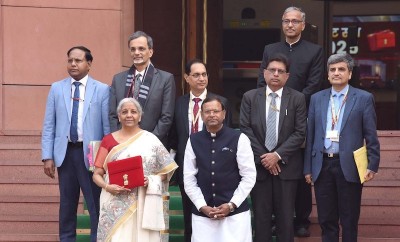 World Bank
World Bank
World Bank commits $100 million to support Sikkim's rural economies, improving women and youth status
The World Bank has announced its commitment to support the state of Sikkim, bolstering the Government of India's development initiatives in the northeast region. The upcoming project, titled the Integrated Service Provision and Innovation for Rural Economies Program, is set to receive financial backing next year.
With a total cost of $269.74 million, the project aims to promote economic inclusion opportunities for women and youth in the non-farm sector, reported EastMojo.
The World Bank has pledged $100 million towards this endeavor, recognizing the importance of transforming the socio-economic status of women and youth in rural areas, particularly those outside the agricultural sector.
According to the World Bank's project information document, Sikkim has achieved remarkable economic growth while prioritizing sustainable development outcomes. Spanning an area of 7,096 square kilometers, Sikkim holds strategic importance within the Government of India's Act East Policy and stands as one of the fastest-growing states economically.
The document highlights that Sikkim has experienced double-digit per capita GDP growth since FY04/05, surpassing other comparably sized northeastern states that have shown minimal growth.
Sikkim has reduced its poverty rate from 30.9 percent (170,000 people) in FY04/05 to 8.2 percent (51,000 people) in FY11/12. Moreover, the state ranks third-lowest in terms of the Multidimensional Poverty Index (MPI) value, exhibiting a decline of 0.157 between 2005-06 and 2015-16, reaching an MPI value of 0.019.
However, the document also points out a discrepancy between Sikkim's changing economic structure and the lag in employment transformation.
While sectors like manufacturing and services, particularly tourism, pharmaceuticals, and hydropower, have witnessed impressive growth rates and are vital to the state's economic progress, the corresponding shift in employment has been slow.
Despite significant growth in sectors such as tourism and pharmaceuticals, over 70 percent of Sikkim's workforce is still employed in agriculture. This disparity between output transformation and employment transformation, particularly for women and youth, poses a potential hindrance to the state's sustainable growth.
Sikkim faces specific challenges in terms of female labor force participation (FLFP). Although the FLFP rate is relatively high at 58 percent, nearly half of the women in the 15-59 age group are employed in agriculture and related occupations, compared to 20 percent of men.
Additionally, the urban FLFP rate for women stands at 34 percent, considerably lower than the rural FLFP rate of 64 percent.
While Sikkim boasts a lower unemployment rate for its youth population compared to the national average, approximately 41 percent of Sikkim's youth are still employed in agriculture, lacking viable opportunities to transition into non-farm sectors.
The composition of the youth workforce reveals that 28 percent of women and 13 percent of men are engaged in agricultural activities.
Recognizing the pressing need to address these disparities, the World Bank's support aims to bridge the gap between the aspirations of women and youth and the available job market in Sikkim.
The document highlights that the inadequacy of skilled job opportunities within the state forces skilled young people to migrate in search of employment, resulting in a high out-migration rate for Sikkim compared to other northeastern states.
The World Bank's document also acknowledges that despite being a relatively small market with limited connectivity and economies of scale, Sikkim has successfully capitalized on its biodiversity, fostering income-generating activities such as community-based tourism and green jobs.
In response to the World Bank's commitment, the Sikkim government reportedly plans to promote economic inclusion for women and youth in emerging sectors by integrating supply- and demand-side interventions, partnering with the private sector for catalytic investments, and coordinating across government agencies.
With the World Bank's announcement to support Sikkim's development, Arunachal Pradesh remains the only state in the northeast region that has not received support from either the World Bank or the Asian Development Bank.
Support Our Journalism
We cannot do without you.. your contribution supports unbiased journalism
IBNS is not driven by any ism- not wokeism, not racism, not skewed secularism, not hyper right-wing or left liberal ideals, nor by any hardline religious beliefs or hyper nationalism. We want to serve you good old objective news, as they are. We do not judge or preach. We let people decide for themselves. We only try to present factual and well-sourced news.







